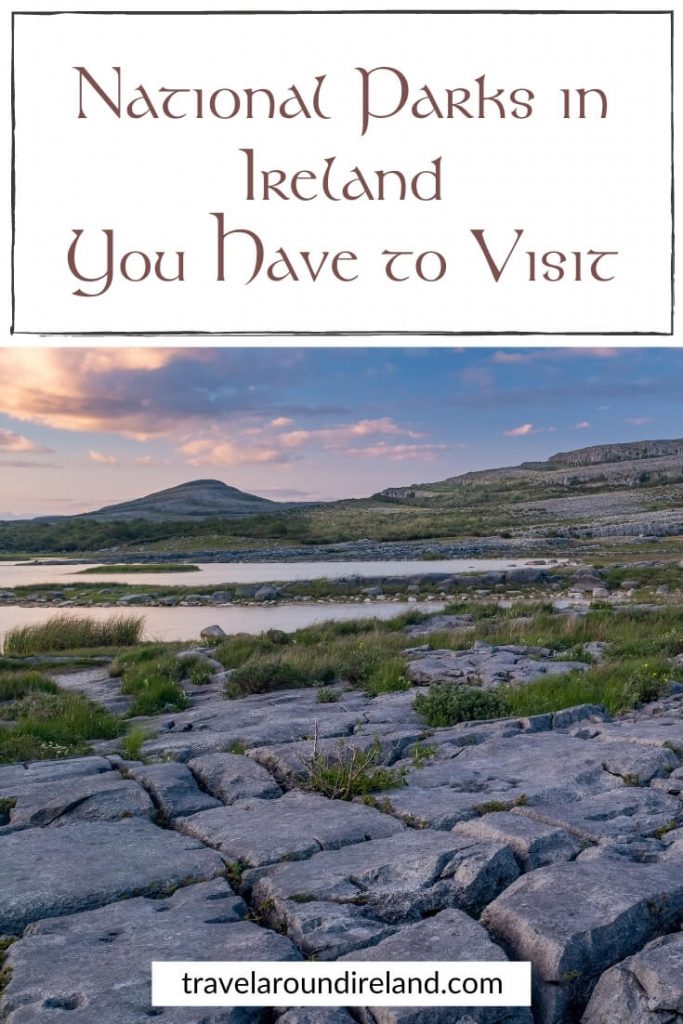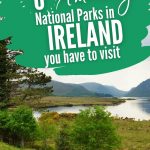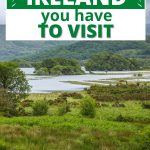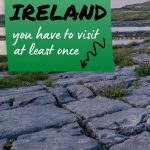On the hunt for the most breathtaking sights and experiences Ireland has to offer? Perhaps you’re even slightly overwhelmed by the sheer abundance of choices? Well, fret not! You’re about to uncover the ultimate roadmap to the national parks in Ireland, some of Europe’s best-kept secrets.
As a local with an unquenchable thirst for exploring my homeland’s natural treasures, I’m thrilled to share my inside knowledge with you.
I’ve explored the Killarney National Park on the back of my husband’s motorbike, skirted around the edge of the Connemara National Park, and driven through the Wicklow Mountains National Park so many times I’ve lost count.
Believe me when I say that there’s no better way to truly immerse yourself in the authentic Irish experience than by visiting our national parks.
In this comprehensive guide, we’ll embark on a virtual journey through Ireland’s six mesmerizing national parks. From the magical wilderness of Glenveagh to the otherworldly beauty of the Burren, I’ll give you a sneak peek into what makes each of these parks a must-visit destination.
This guide isn’t just for seasoned hikers or photographers. It’s for anyone with a curious heart and a love for nature. Even if you’re merely dreaming of the fresh, crisp Irish air, you’ll find something here to inspire and excite you.
So, grab a cup of tea, settle in, and let’s traverse the lush and vibrant landscapes of Ireland together.
Prepare to fill your travel itinerary with captivating experiences that will create lasting memories. Ready to discover the national parks of Ireland? Let’s get started on this unforgettable adventure!
*This post contains affiliate links, which may include Amazon affiliate links. To read more about affiliate links, please visit my Disclosure Policy page.
While there may only be 6 national parks in Ireland, they have certainly earned their places as national parks. Some were part of huge estates which were donated to the Irish State. Others are unique landscapes found nowhere else on Earth.
All of the national parks in Ireland are managed by the National Parks and Wildlife Service, Ireland which is no mean feat given the collective size of the Irish National Parks.
Ireland National Parks Map
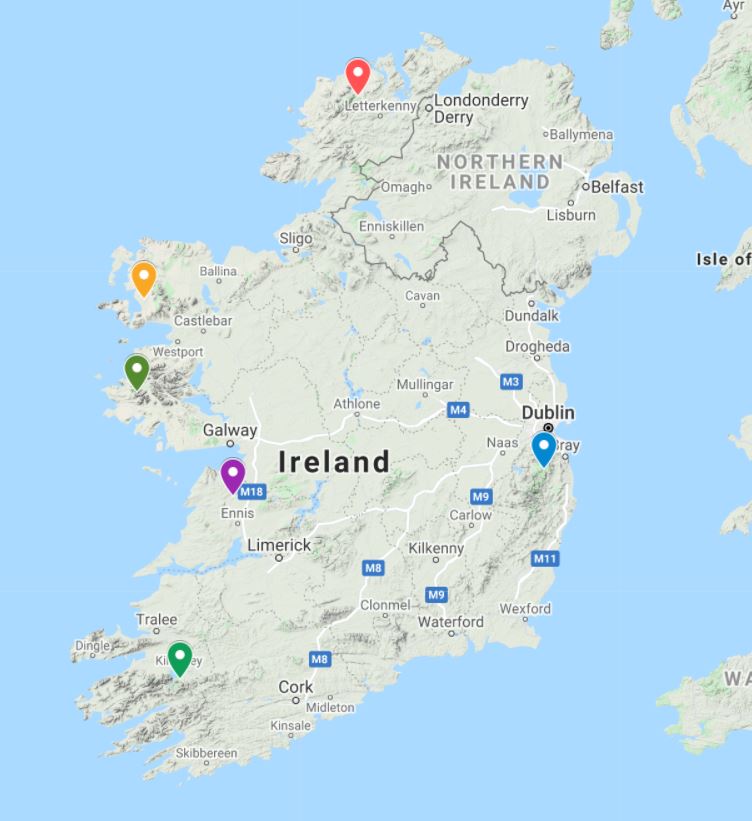
At the time of writing this post, there are no national parks in Northern Ireland. There are calls to create one in Northern Ireland in the Mourne Mountains in County Down which would stretch from Carlingford Lough to Newcastle and Slieve Croob. If designated it would be the first and only national park in Northern Ireland. And long overdue.
6 Amazing National Parks in Ireland
There are 6 national parks in Ireland, 5 located along the west coast of Ireland and one on the east coast. They are
- Killarney National Park
- The Burren National Park
- Connemara National Park
- Ballycroy National Park
- Glenveagh National Park
- Wicklow Mountains National Park
Some of Ireland’s best places to visit are located within or very close to them. Some are geologically important and some are ecologically important. All are equally beautiful places to visit and at least one should feature on your next Ireland itinerary.
Killarney National Park, Kerry
In my opinion, Killarney National Park, Ireland is one of the best national parks in the world. Spread across 10,236 hectares, Killarney National Park became the first of Ireland’s national parks when the huge Muckross Estate in County Kerry was donated to the Irish Free State in 1932. This forms the core of this national park and contains many places of interest. The park is contained within part of the Ring of Kerry, another must-visit in Ireland.
Killarney National Park Map
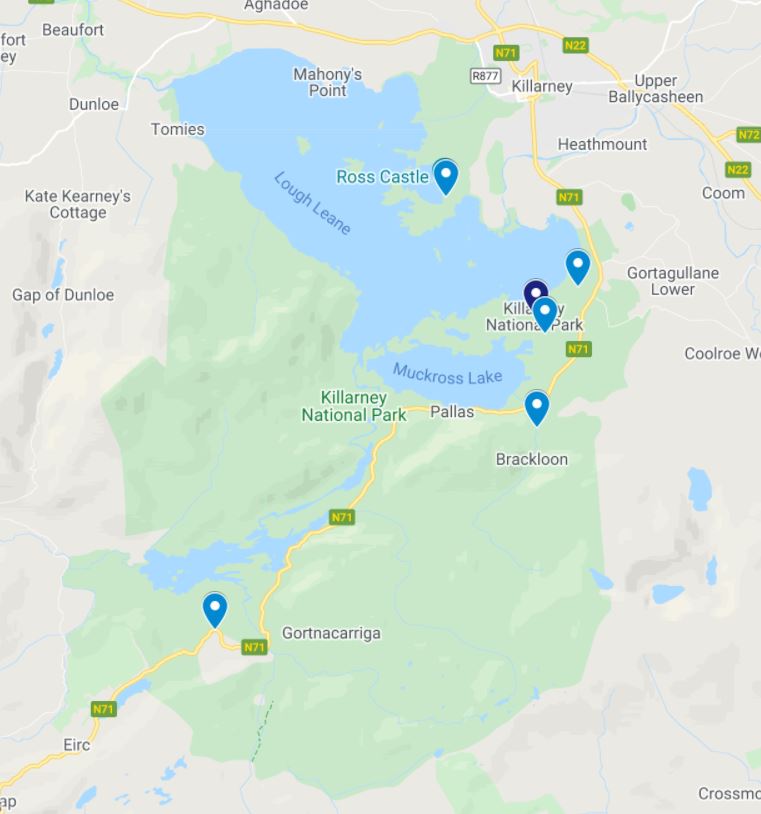
Read my 5-Day Wild Atlantic Way Itinerary to discover how to enjoy the Ring of Kerry and the Killarney National Park during your visit to Ireland.
The park was designated a Biosphere Reserve in 1981 by UNESCO and forms part of a special area of conservation. Within this national park of Ireland are the highest mountain range, the McGillycuddy Reeks, along with the three lakes and the eastern side of the Purple Mountains. Along with mountains and lakes, the largest of which has over 30 islands, you will also find waterfalls and woods which include native oakwoods and yew woods. The lakes of the Killarney National Park are joined together but have very different biodiversities and makeup around a quarter of the park’s area.
Killarney National Park is home to an abundance of evergreen trees, shrubs and lichens which thrive in the climate of the park. You will also find Ireland’s only wild herd of red deer in the park, along with many other animals, birds and insects.
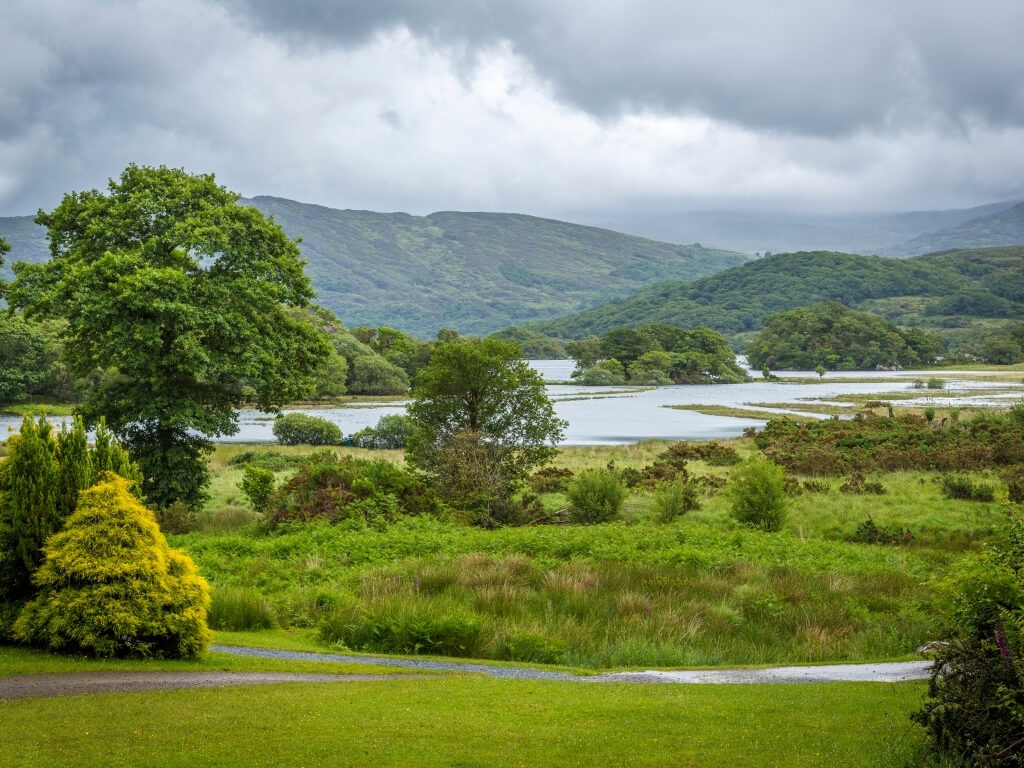
What to do in Killarney National Park
Hiking in Killarney National Park is a popular activity as is fishing and boating. However, the latter two can only be done with a license or licensed operator.
As mentioned, Killarney National Park was founded after the Muckross Estate was donated to the Irish State and visitors can still visit Muckross House, Traditional Farms and the Abbey. Another place to visit in the park is Ross Castle, and Knockreer House and Gardens, home to the national park education centre (the house is not open to the public, but the gardens are).
Inishfallen, on one of the islands in Lough Leane, is another place to visit and is where you’ll find the ruins of a priory. And no visit to this national park would be complete without a visit to the Torc Waterfall.
Killarney National Park Visitor Centre is located in Killarney House and is open 7-days a week.
Killarney National Park address: Killarney House & Gardens, Killarney National Park, Kerry, V93 HE3C.
Best Killarney National Park tours: There are several different tours to take from Killarney Town of the national park.
- Why not take a 2.5-hour walking tour and see the highlights of both Killarney Town and Killarney National Park. Book your tour here.
- Or how about seeing Killarney National Park on horseback during a 2-hour guided tour. Check out this tour and book it here.
- Want to see the best bits and find hidden gems with a local? Then book a 4 to 5-hour private tour with a local and enjoy all the highlights in a small group. See more details and book this tour here.
Connemara National Park, Galway
The Connemara National Park, Ireland is located in the west of Ireland in County Galway and is spread over nearly 3,000 hectares and encompasses mountains, heaths, grasslands and bogs. You’ll also find woodland in this beautiful national part which was established in 1980. The park originally formed part of the lands of the Kylemore Abbey Estate.
Connemara National Park Map
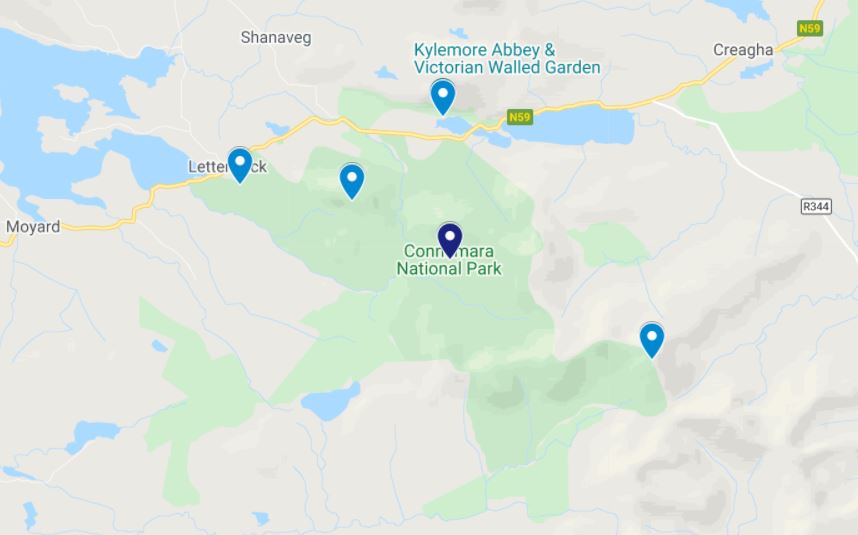
Mountains found in the Connemara National Park include Benbaun, Bencullagh, Benbrack and Muckanaght, part of the famous Twelve Bens range. Connemara is famous for its rugged landscape which is home to Connemara ponies. Wild herds roam free here and it is a bonus if you manage to see them during your visit.
The best access to the park is via Letterfrack, a 19th-century Quaker-founded village. The area of Connemara in County Galway is a Gaeltacht area, so listen out for conversations held in Irish.
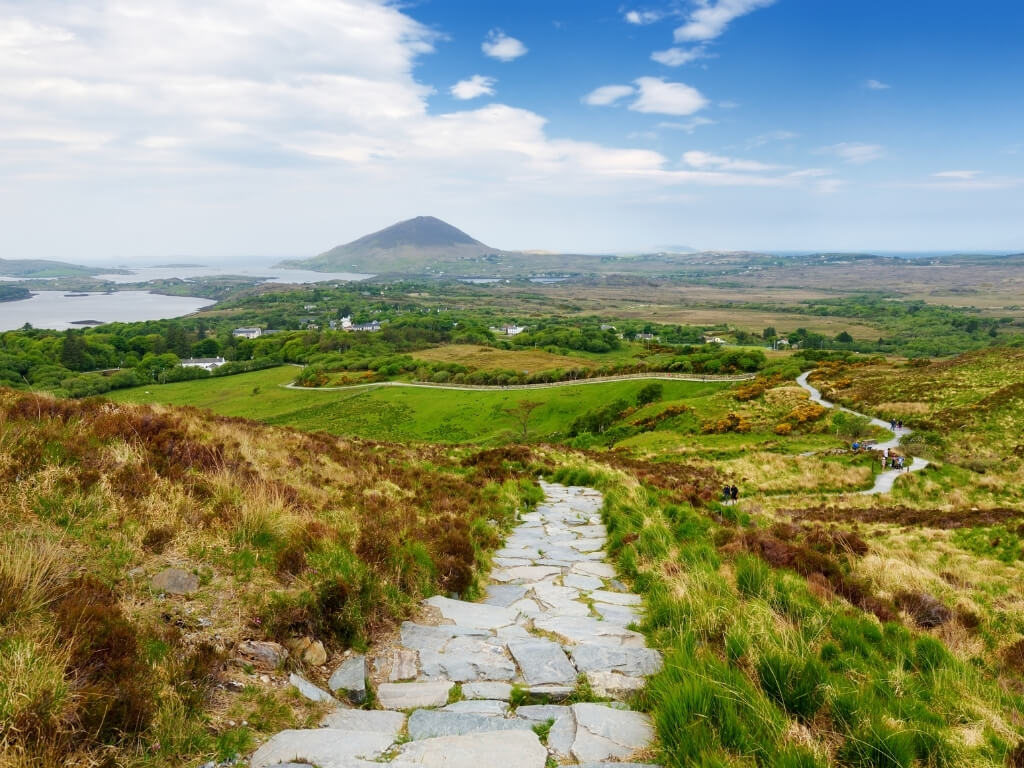
What to do in Connemara National Park
As well as trying to spot the Connemara ponies, there are other things to do in Connemara National Park. As mentioned, the park was once part of the Kylemore Abbey Estate and visitors can still enter Kylemore Abbey and enjoy the walled gardens.
For hikers, the circular Diamond Hill Walks are enjoyable and experienced hikers and walkers could attempt to climb the Twelve Bens so long as they go fully equipped and prepared.
There are glimpses of Connemara’s history in the park through the 4,000-year-old megalithic tombs and old farmer ridges.
The Connemara Visitor Centre is open from March to October and has displays on the flora and fauna of the park and on how the landscape developed over time.
Connemara National Park address: Connemara National Park Visitor Centre, Letterfrack, Galway.
Best Connemara National Park tours: If you are visiting Galway and would like to take a tour of Connemara, then consider one of these.
- Take a fully-guided, 9-hour tour of the area of Connemara including Connemara National Park. Click here for more details and to see the latest prices for this tour.
- Enjoy a self-guided hiking tour of Connemara National Park with lunch included and return bus transport to Galway so you can enjoy the park at your leisure. This tour lasts 9 hours and can be booked here.
Burren National Park, Clare
The Burren National Park, Ireland is located across northern County Clare and is a very unique landscape. Covering approximately 1,500 hectares, this rocky, wind-swept region is a striated lunar-like landscape of barren grey limestone which was formed millions of years ago under ancient seas and was then forced upwards.
The Burren National Park Map
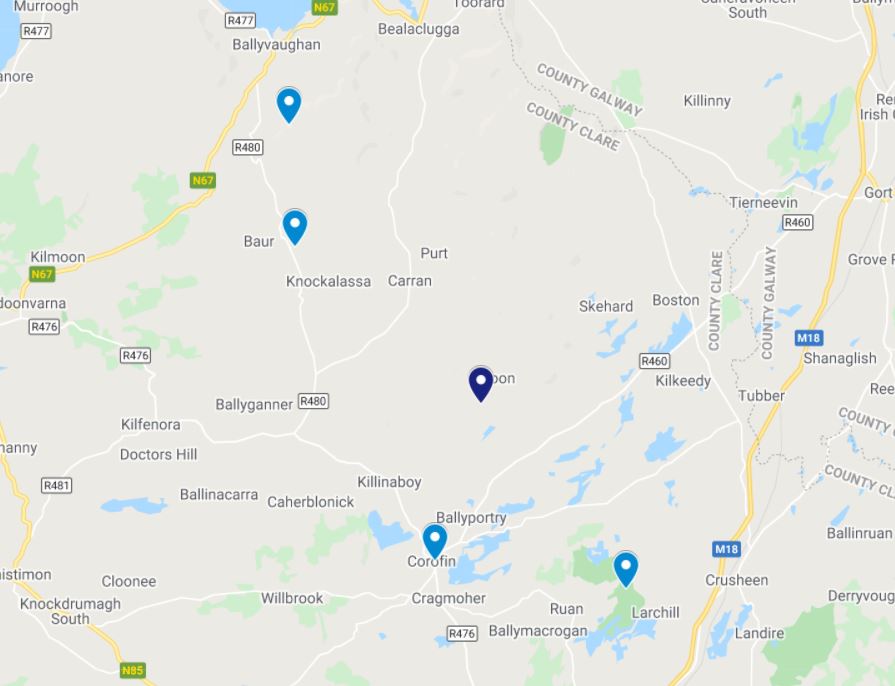
This national park was established in 1991 as Ireland’s fifth national park and is also the smallest national park in Ireland.
The word Burren comes from the Irish word “Boireann” meaning rocky place and is fitting given the extent of the exposed Karst limestone pavement it is famous for. And while at first, you might think this is a completely barren land, you would be wrong.
The Burren contains examples of all major habitats including hazel scrub, turloughs, lakes, cliffs, fens, calcareous grasslands, ash/hazel woodlands and petrifying springs. Wildflowers in spring also bring the Burren alive with colour. Animals that can be found here include pine marten, badgers, foxes and stoats while otters and seals inhabit the coastal shores of the park.
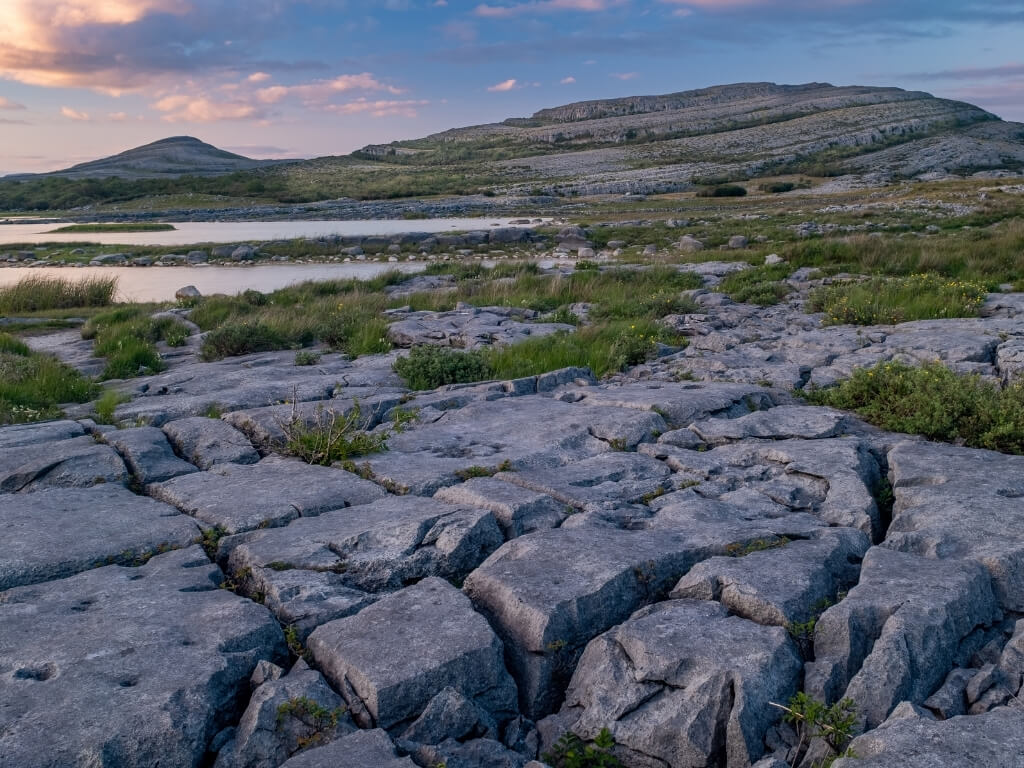
What to do in the Burren National Park
The Burren is a walker’s paradise and there are lots of trails and hikes to be enjoyed. Aillwee Caves are a series of spectacular show caves which must be visited.
The ancient history of the park is visible through the more than 2,500 historical sites in the national park. One of Ireland’s most iconic ancient monuments is located in the Burren National Park, the Poulnabrone Dolmen, which is 5,000 years old. There are other tombs and ring forts to visit including the Iron Age stone fort of Cahercommaun.
The house featured in the TV series “Father Ted” is also located in the Burren National Park, but can be hard to find. You cannot enter the property but can take pictures from outside the gates.
The Burren National Park Visitor Centre is located in Corofin and is open to the public from April to September and provides information about the flora, fauna and geology of the park while promoting conservation through awareness and education.
Burren National Park address: Burren National Park, Clare Heritage Centre, Corofin, Clare, V95 T9V6.
Best Burren National Park tours: Several companies offer combined tours of the Cliffs of Moher and the Burren National Park. See options below.
- If you are visiting Galway there is a 7.5-hour coach tour of the Cliffs of Moher and the Burren National Park which you can take. See details of this tour and book it here.
- If you are in Kerry or flying into Shannon Airport, then consider booking this 9 to 10-hour private tour of the Cliffs of Moher and the Burren National Park. For details and to book this tour, click here.
Wicklow Mountains National Park, Wicklow
The Wicklow Mountains National Park, Ireland is the only national park in Ireland located in the east of the country. It covers over 20,000 hectares and is also Ireland’s largest national park. County Wicklow is often called the Garden of Ireland and when you enter the Wicklow Mountains National Park, it is easy to see why.
Map of Wicklow Mountains National Park
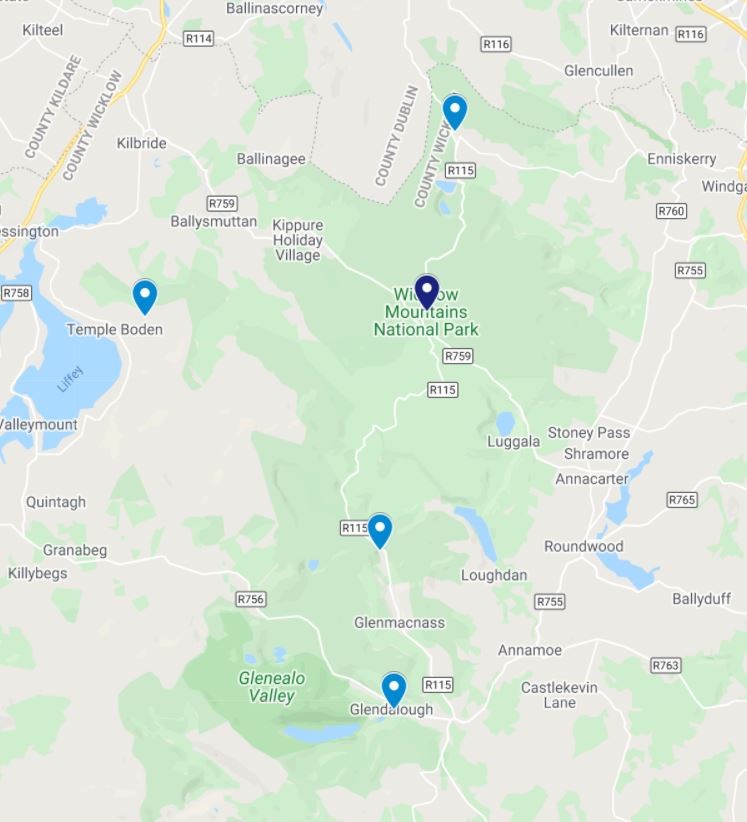
Established in 1991, this national park is a mix of upland blanket bog and heath, wooded valleys, lowlands, streams and forests. The park is home to several protected species of animals including rare otters and ten bat species. Threatened birds species that are found in the park include peregrine falcon and the whooper swan.
The Wicklow Mountains were once inaccessible, providing a hiding place for opponents of British Rule in the 17th and 18th centuries. But the building of the Military Road opened it up and you can still drive this road, albeit a modern version of it.
The oldest established walking route in Ireland passes through the park, the Wicklow Way, which extends from Marlay Park in Dublin to Clonegal in County Carlow, some 127km long.
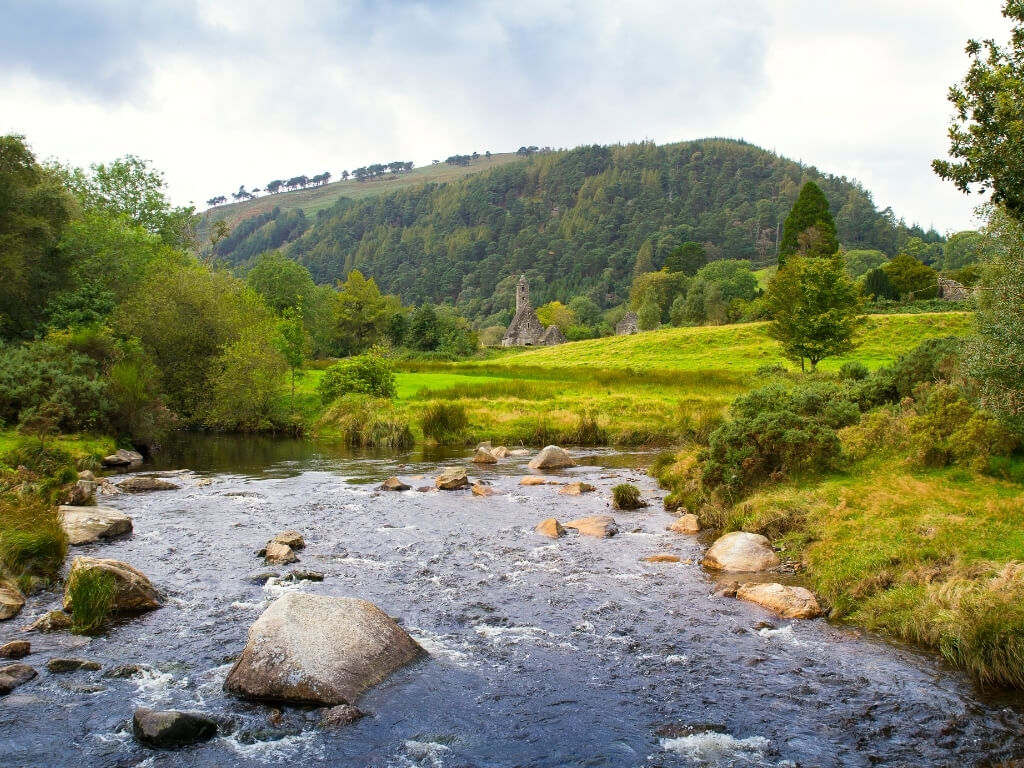
What to do in Wicklow Mountains National Park
Walking and hiking are popular within this national park, and although no peak exceeds 915m, the mountains can be dangerous in bad weather, so only experienced hikers/walkers who are fully prepared should venture out away from main roads.
There are scenic drives that carve a path through the Wicklow Mountains National Park including the Military Road (R115) and the R756 through the Wicklow Gap. As a child, my family used to take these roads to reach our relations in Bray and they pass through beautiful landscapes.
But the most popular place to visit in the Wicklow Mountains National Park is the monastic site of Glendalough. Established by Saint Kevin in the 6th century, the Glendalough site is famous for the Round Tower and other monastic buildings as well as its two lakes.
The Powerscourt Estate is another popular place to visit and the Glenmacnass Waterfall is worth visiting, which stands at 80m in height.
The Wicklow Mountains National Park Information Office is open daily from 10am to 5pm and is located 200m from the Upper Lake car park at Glendalough. Public toilets are located at the OPW Visitor Centre beside the monastic site and in the Upper Lake car park.
Wicklow Mountains National Park address: Wicklow Mountains National Park, Kilafin, Laragh, Wicklow, A98 K286.
Best Wicklow Mountains National Park tours: If you are visiting Dublin for a few days, you can easily take a tour to the Wicklow Mountains National Park. tours from Dublin include the following.
- A fully-guided, half-day tour of the Wicklow Mountains National Park including visiting Glendalough will take approximately 5 hours. See this tour here and book it now.
- If you would like to spend more time in the park, why not take a hike and drive tour of the Wicklow Mountains National Park which lasts 8 hours and includes Glendalough. See tour details here and the latest prices.
Glenveagh National Park, Donegal
Glenveagh National Park, Ireland is one of the most remote in Ireland and covers nearly 17,000 hectares making it the second largest of the national parks of Ireland. Located in County Donegal, it was established in 1986 and is a park dominated by lakes, mountains, waterfalls, and native oak woodlands. You’ll find the Derryveagh Mountains at the heart of it.
Glenveagh National Park Map
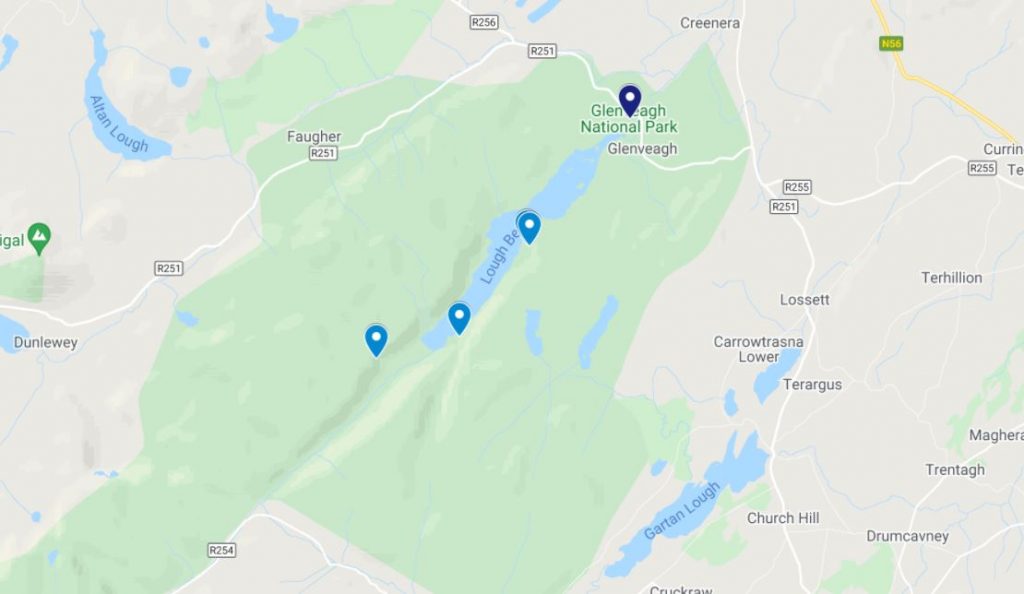
The centre of the park is on the edge of Lough Veagh where you will find the 19th-century castellated mansion of Glenveagh Castle. The area around the castle was managed as a private deer park before being handed over to the State in the 1970s.
Glenveagh National Park is home to the largest herd of red deer in Ireland after they were reintroduced by the former landowner John George Adare’s wife in the late 1800s. Deer are not the only inhabitants though. The national park is recognised as a Special Protection Area for the golden eagle (reintroduced in 2000) and also has foxes, badgers, owls, pine martens and peregrine falcon as residents.
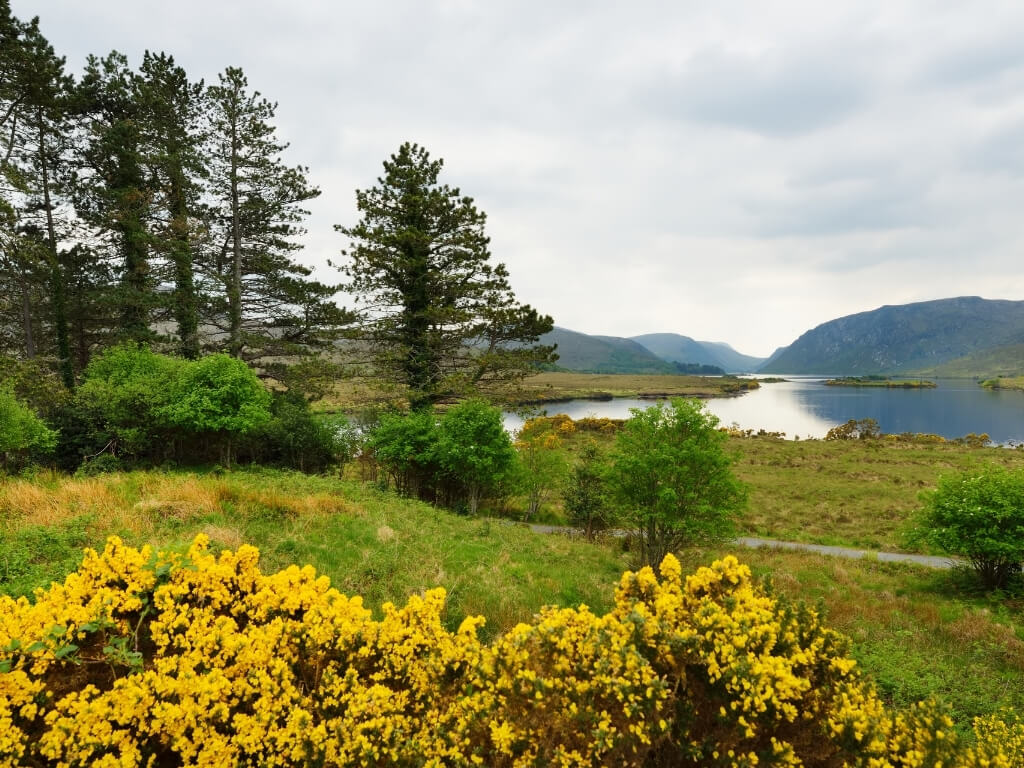
What to do in Glenveagh National Park
Walking and hiking are popular past-times in this national park. Experienced hikers can take on the highest peak in Donegal, Mount Errigal which lies on the western edge of the Glenveagh National Park. There are lots of trails for people with various abilities.
Visitors to the national park can visit Glenveagh Castle by either walking from the Visitor’s Centre or taking the bus (for a fee). Visits are by guided tours only. Take a hike out to see Astellen Falls, which lie about 3km from the castle, but go prepared, especially if it’s been raining.
The visitor centre is open daily from 9.15am to 5.15am and there are toilets available there.
Glenveagh National Park address: Glenveagh National Park Visitor Centre, Church Hill, Letterkenny, Donegal, F92 P993.
Wild Nephin Ballycroy National Park, Mayo
Ballycroy National Park, Ireland is one of the best national parks in Ireland for discovering bogs. Established in 1998 and Ireland’s newest national park, Ballycroy in County Mayo covers 11,000 hectares and is also called the Wild Nephin Ballycroy National Park.
Map of Ballycroy National Park
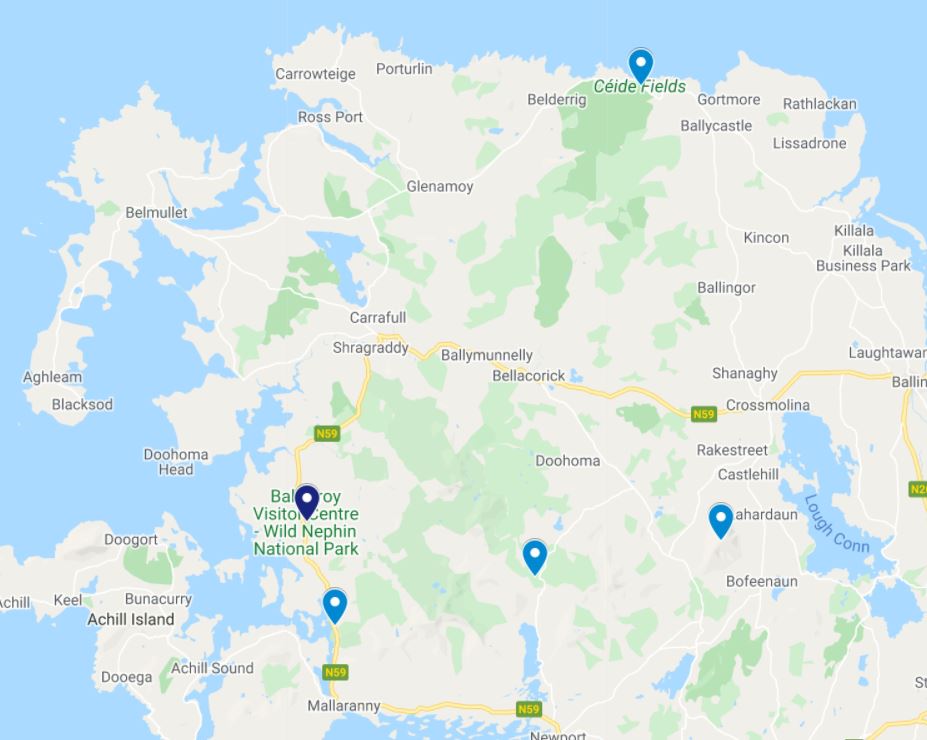
The park is dominated by the Nephin Beg range of mountains and the Owenduff Bog, one of the last intact active blanket bogs in Western Europe. Atlantic bog and mountainous terrain form much of the landscape of this national park in Ireland.
There is a diverse collection of inhabitants which have made this national park their home including whooper swans and peregrine falcons.
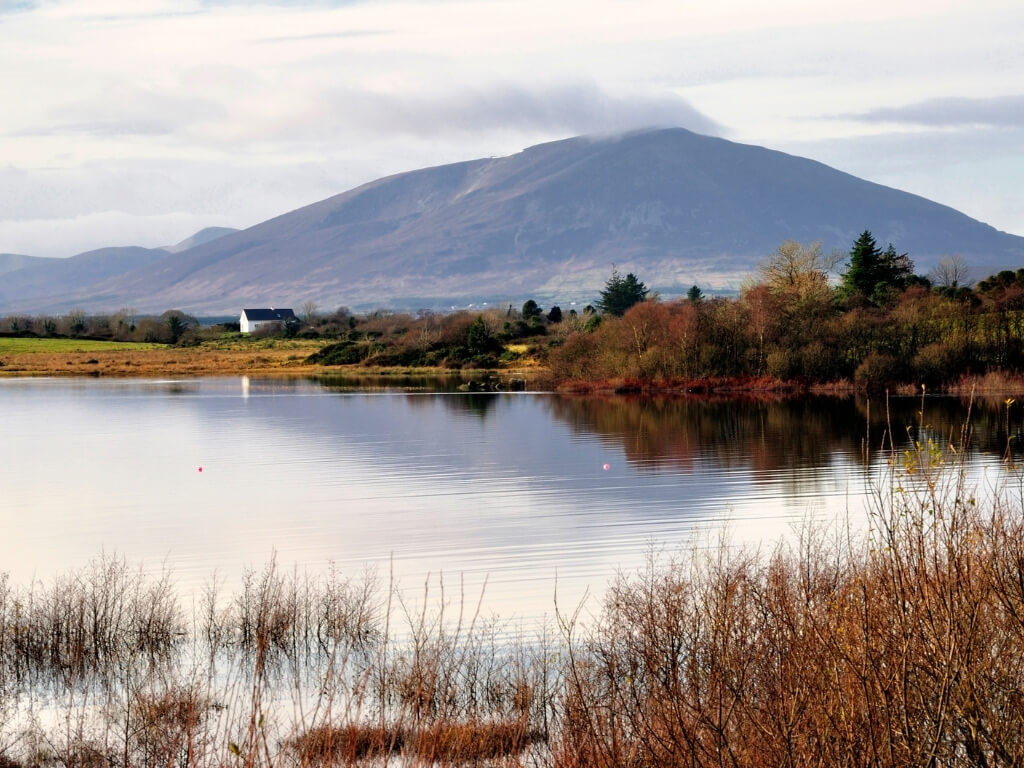
What to do in Ballycroy National Park
There are lots of walking trails in the Ballycroy National Park. A gentle 1.8km trail offers views towards Achill and across the Nephin mountains.
Ballycroy National Park address: Wild Nephin Ballycroy National Park Visitor Centre, Ballycroy Village, Westport, Mayo.
The best tours for visiting multiple national parks: If you would like to visit some national parks on a longer tour of Ireland, then we recommend these tours.
- Enjoy a 5-day tour of the northern half of Ireland from Dublin which includes visits to Connemara National Park and area, Sligo, Donegal and the Glenveagh National Park, Derry, the Giant’s Causeway and Belfast. See the full tour details, latest prices and booking information here.
- Explore Ireland over 9 days and see four of Ireland’s national parks including Killarney National Park, the Burren National Park, Connemara National Park and Glenveagh National Park. Other places you will also visit include the Ring of Kerry, Cliffs of Moher and the Giant’s Causeway. See the full details of this tour including the latest prices, availability and booking information here.
Conclusion
While there are only 6 Irish national parks, each is unique and holds a stunning landscape different from the next.
If you are planning a trip to Ireland, I highly recommend you allow time to visit one of the national parks in Ireland. You won’t be disappointed.
More about visiting Ireland and its natural wonders:
- Wonder of Ireland You Cannot Miss
- Best Irish Beaches
- What is Ireland Famous For?
- National Animal of Ireland
- National Bird of Ireland
- Best Natural Landmarks in Ireland
- Most Famous Landmarks in Ireland
- Best Waterfalls to See in Ireland
